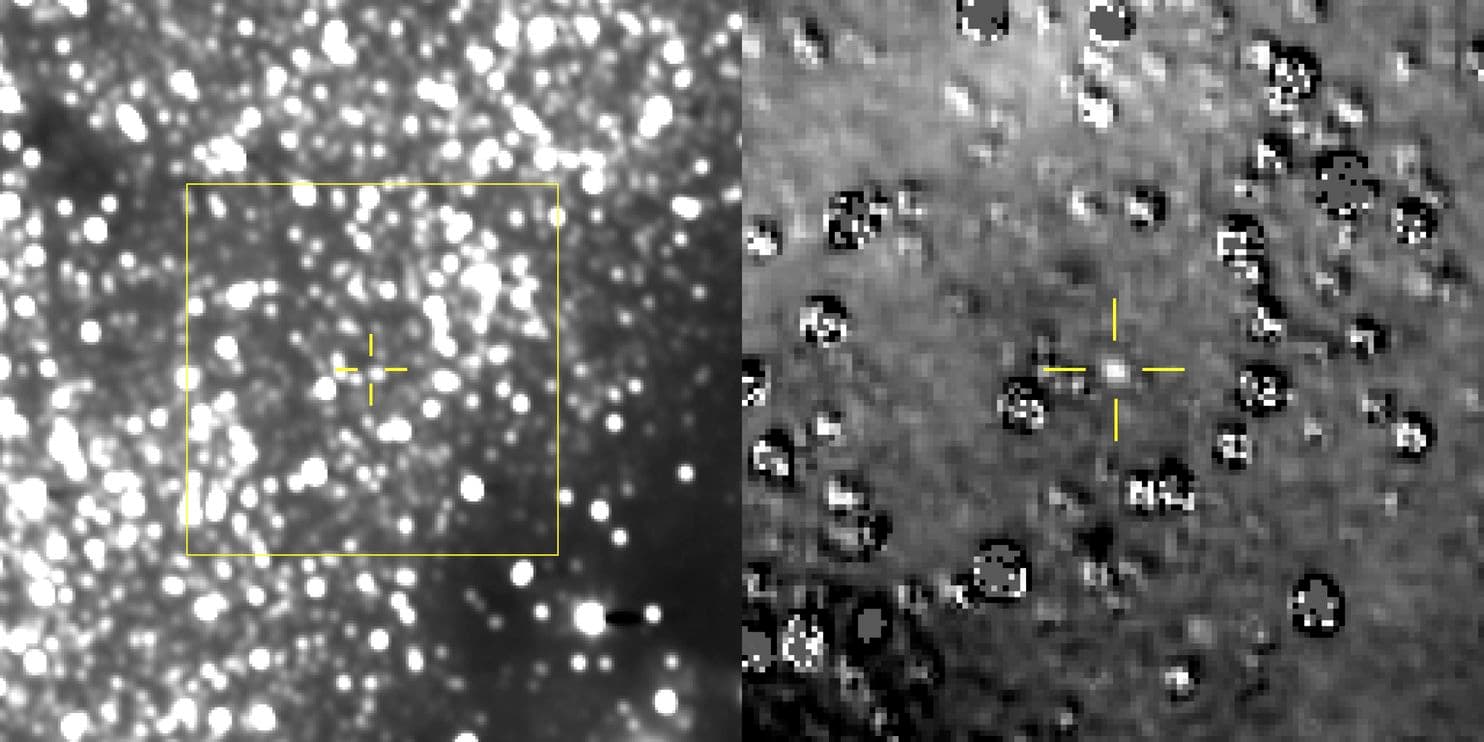To ancient explorers, "ultima Thule," or the most distant region, was what lay past the northernmost edges of maps, beyond the borders of the known world.
So when NASA chose a target for its New Horizons spacecraft that was farther than anything previously explored, Ultima Thule seemed a fitting moniker. The far-flung space rock is an inhabitant of the Kuiper belt, the ring of debris that encircles the icy outer reaches of the Solar System.
Ultima Thule is so dim and so distant that scientists aren't even certain what it looks like. Some of their only information about its size and shape comes from coordinated observations last summer, when astronomers measured the shadow it cast as it passed in front of a star.
New Horizons will finally fly by its target just after midnight on January 1, taking close-up photographs and sophisticated scientific measurements of what it sees. By the time the first images and data stream back to Earth, the borders of the known world will have expanded once more.
"This is just raw exploration," said Alan Stern, a scientist at the Southwest Research Institute and the principal investigator for the mission.
"No one has ever seen a Kuiper belt object as anything but a point of light. No one has ever seen an object that's frozen almost to absolute zero. There are a lot of ideas and every one of them might be wrong."
He took a breath. "We'll find out Tuesday."
NASA is celebrating the record-setting encounter at what is perhaps the Solar System's nerdiest New Year's party.
At the Johns Hopkins University Applied Physics Laboratory (APL), which built and operates the spacecraft, scientists will count down to the moment of New Horizons' closest approach, at 12:33 am Eastern Time (05:33 UTC), then reconvene 10 hours later to watch the first signals from the flyby stream on their screens. (It takes more than six hours for light to travel from Ultima Thule to Earth.)
NASA's vaunted social media operation, a casualty of the partial government shutdown, has been temporarily restored to cover the event. The countdown, signal acquisition and subsequent news conferences will be streamed live on NASA TV and YouTube.
Alice Bowman, mission operations manager for New Horizons at APL, said the spacecraft entered "encounter mode" on Wednesday. This configuration limits the spacecraft's communication with Earth, commanding it to quickly address any technical issues on its own, then get back to science.
Though nerve-racking for engineers, encounter mode ensures that New Horizons makes the most of its brief time near Ultima Thule.
"Because this is a flyby, we only get one chance to get it right," Bowman said.
 (NASA/Johns Hopkins University Applied Physics Laboratory/Southwest Research Institute)
(NASA/Johns Hopkins University Applied Physics Laboratory/Southwest Research Institute)
Above: Our best view of Ultima Thule (between the yellow cross hairs) so far. The image on the right has been magnified and had the background stars subtracted from the image.
New Horizons left Earth in January 2006. It was the first mission designed to explore the most distant part of the Solar System.
Nine years and 3.5 billion miles later, it took the first-ever close-up photos of Pluto, revealing a complex and colorful world mottled with methane mountains and a vast, heart-shaped nitrogen ice plain.
After that flyby, Stern and his colleagues set about searching for a new target in the Kuiper belt, which extends from the edge of Neptune's orbit out to about 5 billion miles from the sun.
Until the 1990s, no one knew what was hiding out there, where sunlight is 0.05 percent as faint as it is on Earth. Now, the Kuiper belt is thought to include millions of icy objects, unused planetary building blocks left over from the earliest days of the Solar System.
These bodies are time capsules, preserved in a deep freeze for the past 4.6 billion years. NASA says Ultima Thule is likely the most primitive planetary object ever explored.
The Kuiper belt object was discovered with the Hubble Space Telescope in 2014. Subsequent observations suggest it is small - no more than 20 miles across - and shaped like a peanut.
Astronomers believe it is a contact binary, made up of two objects touching each other, or perhaps even a binary system, in which two objects orbit each other.
The encounter with Ultima Thule will be brief and technically demanding - even more so than New Horizons' flyby of Pluto. Whereas Pluto is roughly the size of the United States, Ultima could fit atop Washington, DC. This means New Horizons must get much closer to the space rock to examine it, and the encounter will be over much more quickly.
A day before closest approach, Ultima Thule still takes up only two pixels in images taken by New Horizons' camera screen. As New Horizons speeds through space at 9 miles per second, it will take less than a day to turn Ultima Thule back into a speck in the rear view mirror.
But New Horizons' performance so far suggests it is ready for the challenge, Stern said. Measurements taken Saturday showed that the spacecraft was within 20 miles of its intended flyby distance from Ultima Thule and that the timing of the encounter will be within 2 seconds of what was expected.
"We're rendezvousing with something that's a mountain draped in black velvet in almost pitch-dark conditions, and we're screaming up to it [..] within 2 seconds of perfection," Stern said. "You can't get any better than that."
2018 © The Washington Post
This article was originally published by The Washington Post.
https://www.sciencealert.com/nasa-s-new-horizon-is-about-to-encounter-the-furthest-space-object-we-ve-ever-reachedBagikan Berita Ini














0 Response to "NASA Is About to Reach The Farthest Object Yet in The Solar System. Here's How to Watch - ScienceAlert"
Post a Comment